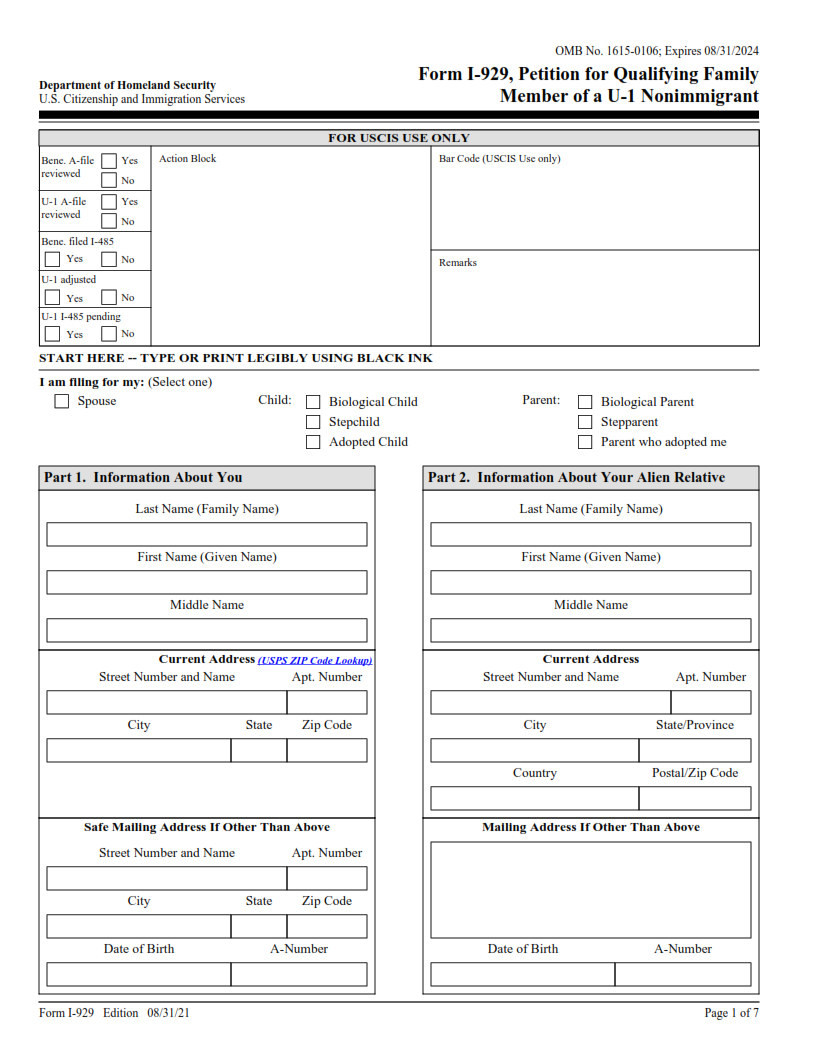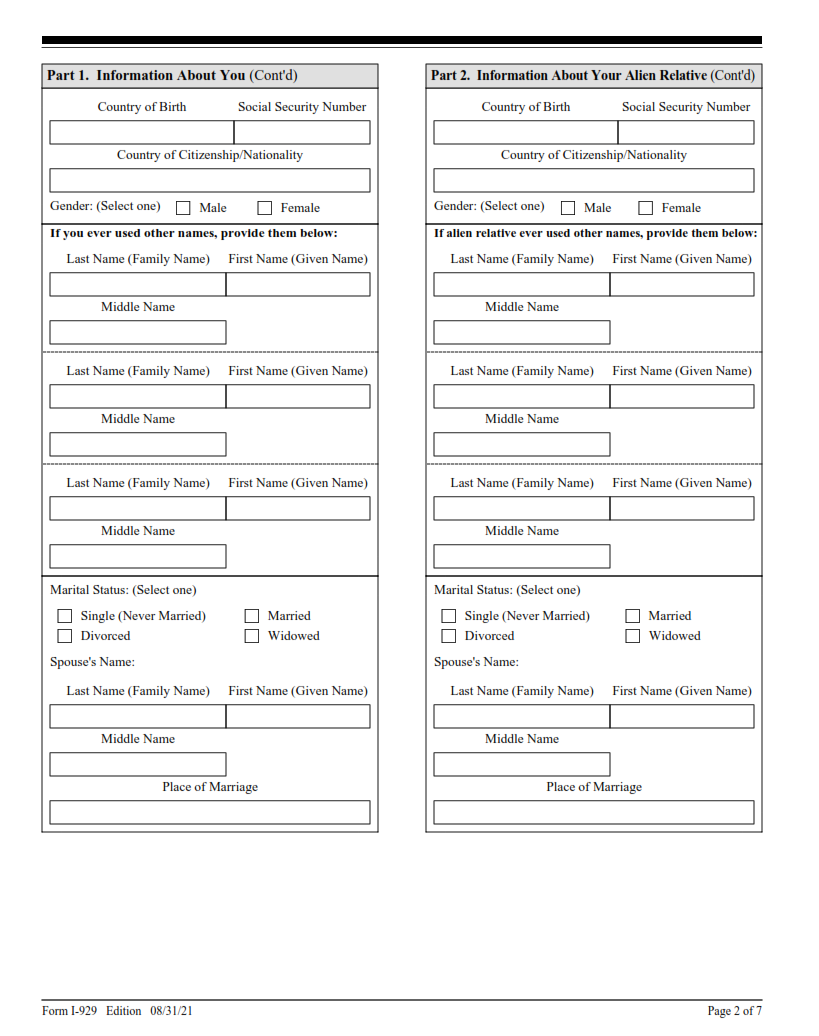FINDERDOC.COM – I-929 Form – Petition for Qualifying Family Member of a U-1 Nonimmigrant – The I-929 form is an important document to know about if you are a qualifying family member of a U-1 nonimmigrant. To begin with, the U-1 nonimmigrant status is for individuals who have suffered extreme cruelty or abuse and are in need of protection from their home country. Qualifying family members for this type of visa include spouses, children and parents. For those who wish to reunite with their U-1 nonimmigrant relative in the United States, the I-929 form must be submitted.
Download I-929 Form – Petition for Qualifying Family Member of a U-1 Nonimmigrant
| Form Number | I-929 Form |
| Form Title | Petition for Qualifying Family Member of a U-1 Nonimmigrant |
| File Size | 836 KB |
| Form By | USCIS Forms |
What is an I-929 Form?
An I-929 form is an immigration document used by family members of U-1 nonimmigrants to obtain permanent residence in the United States. The I-929 form, formally known as Petition for Qualifying Family Member of a U-1 Nonimmigrant, must be filed by any family member who wants to gain lawful permanent resident status due to their relationship with a U-1 nonimmigrant.
The purpose of the I-929 form is to prove that the family member has a qualifying relationship with the principal U-1 nonimmigrant and is eligible for relief. The applicant must provide evidence such as marriage certificates or birth certificates indicating their relationship with the principal U-1 immigrant. In addition, they must also submit financial documents and evidence of good moral character.
What is the Purpose of the I-929 Form?
The I-929 Form is an important document for qualifying family members of a U-1 nonimmigrant. It is used by the United States Citizenship and Immigration Services (USCIS) to determine whether the person meets the requirements to remain in the United States as a U-1 nonimmigrant. The form helps USCIS evaluate whether or not an applicant is eligible for certain immigration benefits, such as legal status and work authorization.
The purpose of the I-929 Form is to provide evidence that applicants meet all of the qualifications to receive these benefits. This includes information about their eligibility based on their relationship with a U-1 nonimmigrant, such as if they are a spouse or child of one, or if they are a parent who has been granted custody by a court order.
Where Can I Find an I-929 Form?
The I-929 form is an important document for individuals seeking to become a qualifying family member of a U-1 nonimmigrant. The I-929 form can be downloaded from the United States Citizenship and Immigration Services (USCIS) website, or requested by mail.
When downloading the I-929 form, it is important to ensure all supplemental forms and documents are included with the application packet. These documents include evidence of the family relationship between the beneficiary and petitioner, proof of continuity of residence outside the United States until admission as a U-1 nonimmigrant, and other supporting documentation as required by USCIS.
The completed I-929 form should be mailed straight to USCIS along with any necessary supporting documents. When submitting an application package to USCIS, it must include copies of all relevant evidence rather than originals.
I-929 Form – Petition for Qualifying Family Member of a U-1 Nonimmigrant
The I-929 Form is an important document in the U.S. immigration process, allowing family members of a U-1 nonimmigrant to petition for lawful permanent residency. It is used by family members who are seeking permanent residence based solely on the fact that they are related to a U-1 nonimmigrant, such as a victim of certain criminal activity or human trafficking who has been granted temporary status in the United States.
In order to qualify for this form, the petitioner must be able to prove that they have an ongoing relationship with their relative and demonstrate how they qualify under any of the special provisions set forth in Immigration and Nationality Act Section 245(m). In addition, applicants must show evidence that their relative meets all other requirements for U-1 nonimmigrant status and provide documentation from law enforcement verifying their relative’s eligibility for U visa classification.
I-929 Form Example

